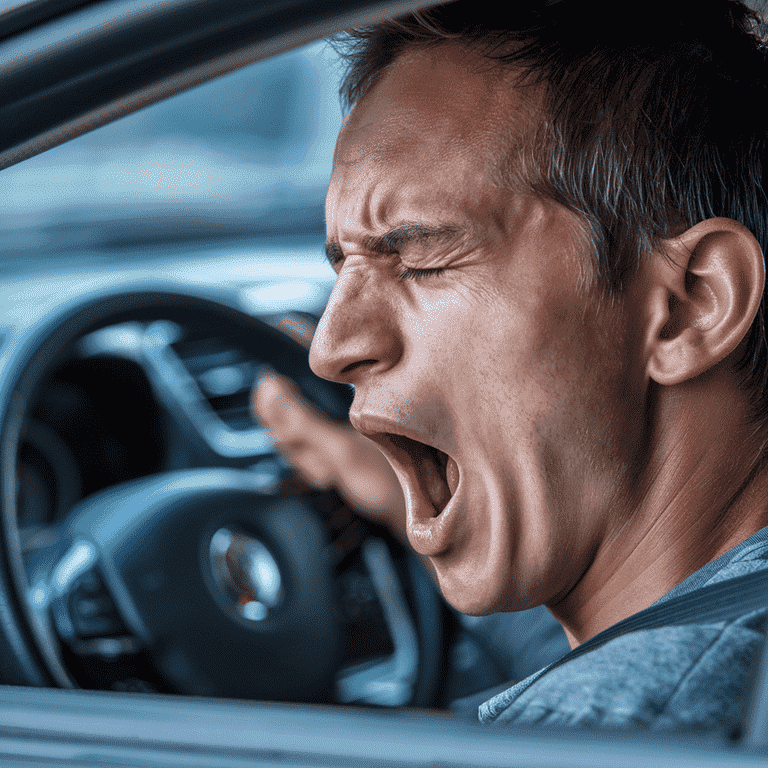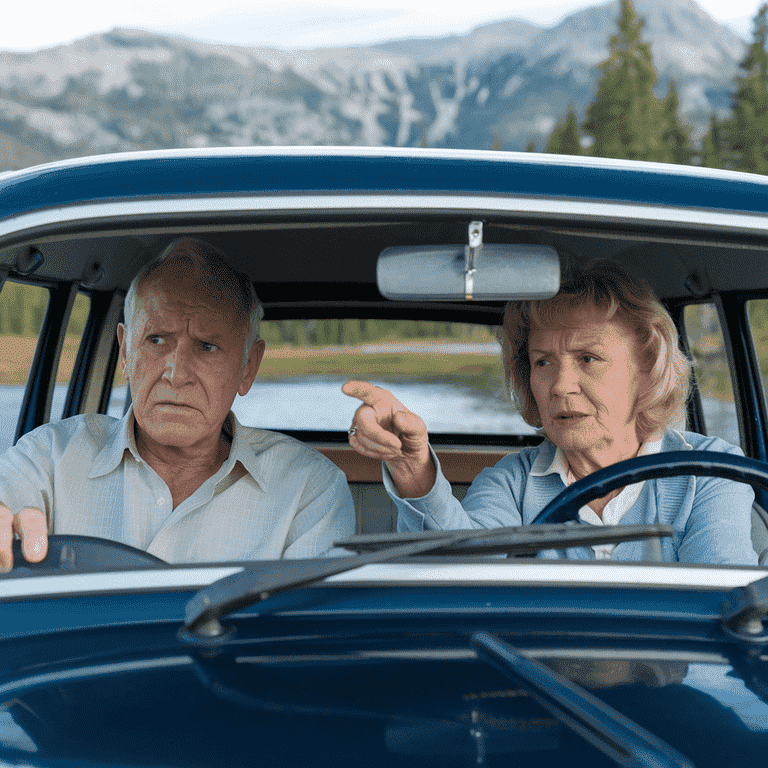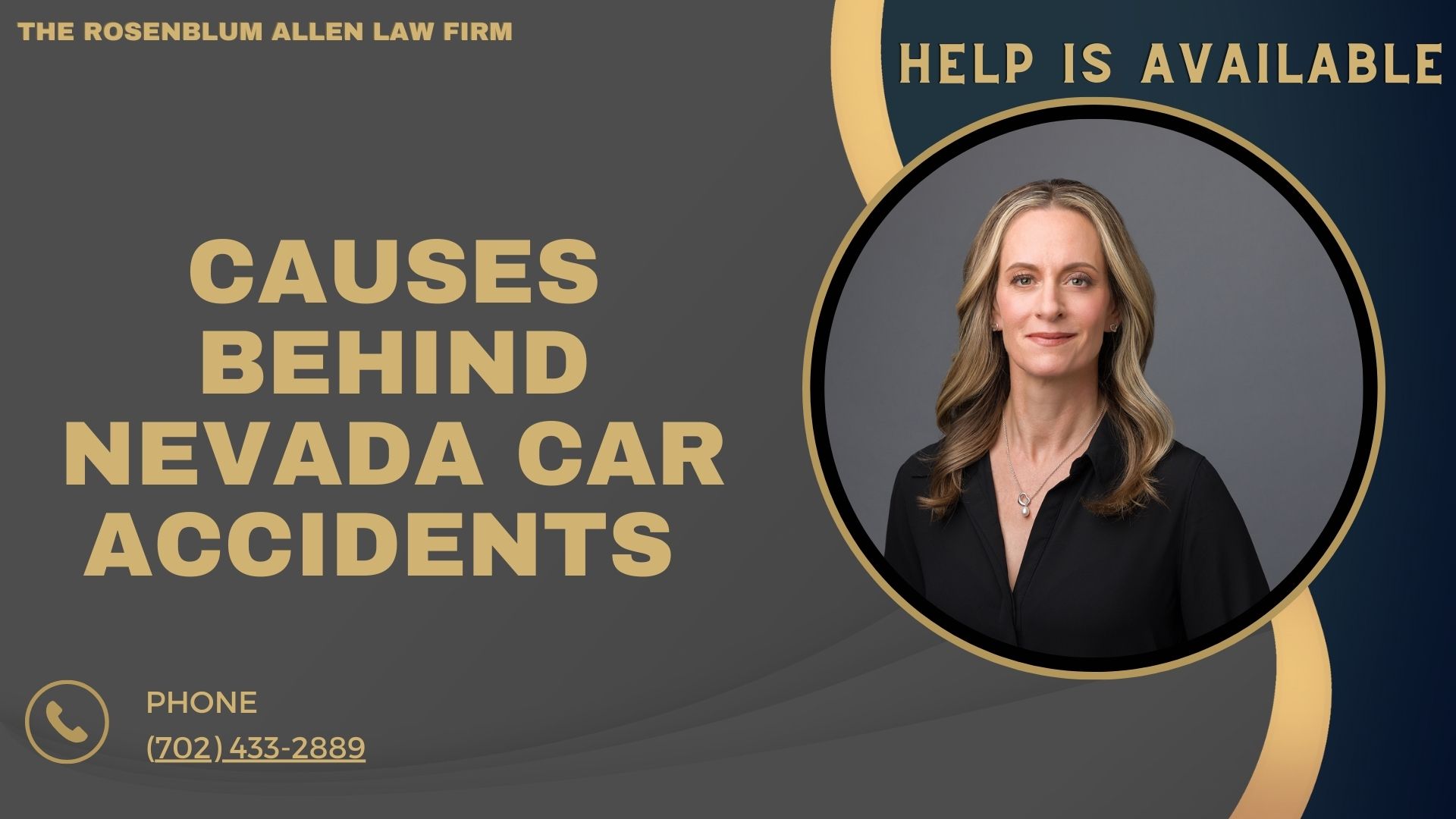Understanding the common causes of these accidents is crucial for drivers seeking to ensure their safety and that of others on the road. This guide delves into the primary factors contributing to car accidents in Nevada, highlighting the need for awareness and proactive measures to mitigate risks. By recognizing these causes, drivers can make informed decisions and adopt safer driving behaviors.
Impaired Driving
Impaired driving is one of the leading causes of car accidents in Nevada. It encompasses any form of driving under the influence of substances that impair a person’s ability to operate a vehicle safely. Let’s explore the major categories of impaired driving.
Alcohol-Related Accidents
Alcohol consumption significantly affects the ability to drive. According to data from the Nevada Department of Public Safety, in 2022, nearly 30% of all car accidents involved a driver with a blood alcohol concentration (BAC) over the legal limit of 0.08%.
Here are some critical points regarding alcohol-related accidents:
- Increased Reaction Times: Alcohol slows brain function, impacting reaction times and decision-making.
- Judgment Impairment: Intoxicated drivers often misjudge distances and speeds, leading to risky maneuvers.
- Legal Consequences: Nevada has strict DUI laws, including hefty fines, license suspension, and mandatory alcohol education programs.
Drug-Impaired Driving
With marijuana being legalized in Nevada, there has been a notable rise in drug-impaired driving incidents. She was driving under the influence of drugs—whether illegal or prescription—can be just as dangerous as drunk driving.
Here’s what you need to know about drug impairment:
- Impact of Marijuana: Studies suggest that marijuana can slow reaction times and impair judgment, increasing the risk of accidents.
- Prescription Drug Dangers: Medications such as opioids and benzodiazepines can also lead to impaired driving. Drivers must be aware of how their medications affect their ability to drive.

Drowsy Driving
Drowsy driving is an often-overlooked hazard that contributes to accidents. Fatigue can significantly impair a driver’s attention and reaction times.
Consider the following:
- Statistics on Fatigue: The Centers for Disease Control and Prevention (CDC) estimates that drowsy driving is responsible for about 6,000 fatal crashes annually in the United States.
- High-Risk Groups: Shift workers, parents of young children, and individuals with sleep disorders are at higher risk for drowsy driving accidents.
- Signs of Fatigue: Common signs include yawning, difficulty concentrating, and heavy eyelids. Drivers should pull over and rest if they notice these signs.
Speeding
Speeding remains a significant factor in many car accidents across Nevada. It increases the likelihood of a crash and exacerbates the severity of injuries. Let’s explore excessive speed and aggressive driving behaviors, which contribute heavily to road safety issues in the state.
Excessive Speed
Driving over the speed limit is a common cause of accidents. Here are some key points related to excessive speed:
- Increased Stopping Distance: Higher speeds result in longer stopping distances, making it harder to react in emergencies.
- Accident Severity: Crashes at higher speeds are often more damaging, leading to severe injuries or fatalities.
- Speed Limits: In urban areas, speed limits often range from 25 to 35 mph, while highways can have limits as high as 70 mph. Following these limits is essential for safety.

Racing and Aggressive Driving
Aggressive driving behaviors, including street racing, contribute to many accidents. Here are the key points concerning this issue:
- Street Racing: Engaging in street racing not only endangers lives but is illegal in Nevada, with severe penalties, including fines and jail time.
- Tailgating and Weaving: Aggressive drivers may frequently change lanes without signaling or tailgate other vehicles, increasing the risk of collisions.
- Legal Ramifications: Nevada has laws against aggressive driving, which can result in hefty fines and increased insurance premiums.
By understanding these common causes of car accidents in Nevada, drivers can take proactive steps to avoid risky behaviors and contribute to safer roads for everyone. Safe driving is not just about following the rules—it’s about being aware, responsible, and considerate on the road.
Inexperienced Drivers
Let’s face it: we’ve all been there. Remember your first time behind the wheel? Sweaty palms, racing heart, and a mix of excitement and fear. Inexperience on the road is a significant factor in many Nevada car accidents. Let’s dive into how this plays out for different age groups.
Teen Drivers
Ah, the thrill of finally getting that driver’s license! But with great power comes great responsibility. Teen drivers are particularly vulnerable to accidents due to their lack of experience. Nevada has implemented a Graduated Driver Licensing (GDL) program to help ease new drivers into the responsibilities of the road.
Here’s how it works:
- Instruction Permit: Teens must hold this for at least six months and complete 50 hours of supervised driving.
- Restricted License: For the first six months, teens can’t drive between 10 PM and 5 AM (with some exceptions).
- Full License: Granted after successful completion of the previous stages.
Common mistakes made by novice drivers include:
- Misjudging speeds and distances
- Failing to spot hazards
- Overconfidence in their abilities
- Succumbing to peer pressure
Parents, you play a crucial role! Set a good example, provide plenty of supervised practice, and consider setting rules beyond the GDL requirements.

Elderly Drivers
On the other end of the spectrum, we have our seasoned drivers. With age comes wisdom and some challenges that can affect driving ability.
Age-related driving challenges include:
- Slower reaction times
- Decreased vision, especially at night
- Reduced flexibility and strength
- Medications that may impair driving ability
It’s a sensitive topic, but it’s essential to have open conversations about when it might be time to limit or stop driving. Here are some signs it might be time to consider hanging up the keys:
- Getting lost in familiar areas
- Receiving multiple traffic tickets or warnings
- Experiencing near-misses or fender benders
- Family and friends expressing concern
Remember, giving up driving doesn’t mean giving up independence. Many communities offer transportation alternatives for seniors.

Conclusion
Whew! We’ve covered a lot of ground, haven’t we? From impaired driving to inexperienced drivers, we’ve explored Nevada’s common causes of car accidents. Let’s recap the major points:
- Impaired driving, including alcohol, drugs, and fatigue, significantly increases accident risk.
- Speeding and aggressive driving behaviors are dangerous and illegal.
- Distracted driving, especially cell phone use, is a growing concern.
- Obeying traffic laws is crucial for everyone’s safety.
- Weather and road conditions can create hazardous situations.
- Vehicle malfunctions can lead to unexpected accidents.
- Inexperienced young and old drivers face unique challenges on the road.
Safe driving isn’t just about following rules—it’s about being aware, responsible, and considerate. Every time you get behind the wheel, you’re not just driving for yourself but for everyone sharing the road with you. So, the next time you’re cruising down the Las Vegas Strip or taking a scenic drive through Red Rock Canyon, remember these points. Stay alert, stay safe, and enjoy the journey. After all, in the grand casino of life, safe driving is always a winning bet!

Frequently Asked Questions
Frequently Asked Questions
Frequently Asked Questions
How does Nevada's climate affect driving conditions?
Nevada’s climate can create unique driving challenges. The state experiences extreme heat in summer, which can cause tire blowouts and engine overheating. In winter, some areas face icy conditions and snowstorms. Flash floods are also a concern in certain regions, particularly during monsoon season. Drivers should stay informed about weather forecasts and adjust their driving accordingly.
Are there specific areas in Nevada known for high accident rates?
Yes, certain areas in Nevada have higher accident rates. Las Vegas, particularly the Strip and major intersections like Flamingo Road and Las Vegas Boulevard, sees a high number of accidents due to heavy traffic and distracted drivers. Interstate 15 and US-95 also experience frequent accidents, especially during peak travel times.
How does Nevada's tourism industry impact road safety?
Nevada’s tourism industry, particularly in Las Vegas, brings in many out-of-state drivers unfamiliar with local roads and traffic patterns. This can lead to increased accidents due to confusion about directions, sudden lane changes, or distracted driving while looking at attractions. Additionally, the 24/7 nature of Las Vegas can contribute to more instances of impaired or fatigued driving.
What are the penalties for hit-and-run accidents in Nevada?
Hit-and-run accidents in Nevada carry severe penalties. Accidents resulting in property damage are considered a misdemeanor, with fines up to $1,000 and potential jail time. If the accident causes injury or death, it becomes a felony, with penalties including hefty fines, license revocation, and significant prison time.
How does Nevada law address rideshare (e.g., Uber, Lyft) accidents?
Nevada has specific laws regarding rideshare accidents. Rideshare companies must carry substantial insurance policies that cover passengers in the event of an accident. The coverage amount can vary depending on whether the driver was actively transporting a passenger or waiting for a ride request at the time of the accident.
Are there any unique traffic laws in Nevada that visitors should know?
Yes, Nevada has some unique traffic laws. For instance, riding in the back of a pickup truck is illegal, and all passengers must wear seatbelts, including those in the back seat. Additionally, Nevada has a “move over” law requiring drivers to slow down or change lanes when approaching stopped emergency vehicles.
How does Nevada handle accidents involving self-driving cars?
Nevada was one of the first states to legalize and regulate autonomous vehicles. The state requires companies testing self-driving cars to obtain special licenses and insurance. Depending on the circumstances, liability can be complex and may include the vehicle manufacturer, software developer, or human operator in an accident involving an autonomous vehicle.
What should I do if I witness a car accident in Nevada?
If you witness a car accident in Nevada, safely pull over and call 911 if there are injuries or significant property damage. Provide a statement to law enforcement if requested. You’re not legally required to stop for minor accidents, but your witness account could be valuable for those involved.

Additional Resources for You
Our esteemed lead attorney, Molly Rosenblum, Esq., extends her expertise beyond just legal counsel by providing a rich collection of resources for those seeking guidance in personal injury matters. Each resource is meticulously crafted to assist you in understanding your rights and options in various personal injury scenarios. Here’s a list of the invaluable resources created by Molly Rosenblum, Esq.:
Las Vegas Personal Injury Attorney: Comprehensive legal support for personal injury victims in Las Vegas, ensuring your rights are protected and you receive the compensation you deserve. Learn more.
Las Vegas Car Accident Attorney: Specialized legal assistance for individuals involved in car accidents, offering guidance through the complexities of your case. Explore your options.
Motorcycle Accident Lawyer Las Vegas: Effective legal advice for motorcycle accident victims, helping you navigate through the legal process effectively. Get informed.
Wrongful Death Lawyer Las Vegas: Compassionate and dedicated legal support for families dealing with the tragic loss of a loved one due to wrongful death. Understand your rights.
Truck Accident Attorney Las Vegas: Expertise in handling truck accident cases, ensuring that your rights are defended and you receive proper compensation. Learn more.
Las Vegas Drunk Driving Accident Attorney: Specialized legal assistance for victims of drunk driving accidents, focusing on securing justice and fair compensation. Explore legal support.
Molly Rosenblum, Esq. is committed to providing accessible, detailed, and empathetic legal assistance. Each resource is designed to offer you the knowledge and support necessary to navigate through your personal injury case with confidence and assurance.

Offsite Resources You May Find Helpful
1. Nevada Department of Motor Vehicles: This official website provides all the necessary information about driving laws in Nevada. It can be a useful resource for understanding basic road rules, licensing, and vehicle registration processes.
2. Nevada State Bar Association: This website is a great resource to find certified lawyers in Nevada. They also provide information on legal aid and other resources for legal advice and assistance.
3. Nevada Division of Insurance: This website provides information about Nevada’s insurance laws, including mandatory minimum coverage and how claims are handled in the event of an accident.
4. Avvo – Find Nevada Car Accident Lawyers: Avvo is a site that allows you to search for lawyers by expertise and location. It includes reviews, ratings, and contact information for each attorney, helping you find a suitable car accident lawyer in Nevada.
5. Legal Information Institute – Personal Injury: This resource by Cornell Law School provides a comprehensive overview of personal injury law, which can be helpful to understand your rights and what to expect when filing a personal injury claim.
6. FindLaw – First Steps in a Personal Injury Claim: This article explains the steps you should take immediately after a car accident to protect your rights and maximize your potential compensation. It’s valuable for anyone involved in a car accident who might need to file a personal injury claim.
What's Next?
Lorem ipsum dolor sit amet, consectetur adipiscing elit. Ut elit tellus, luctus nec ullamcorper mattis, pulvinar dapibus leo.




